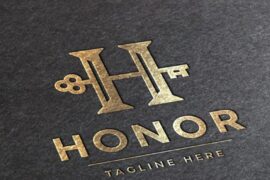A Website is primarily a marketing tool. It is, more or less, better for a business to have its own website because it gives the business a platform for a bigger audience such as those that are connected thru the World Wide Web. Being a representation of the business it is under, it is important that website developers and designers are able to incorporate what it stands for when considering the look and feel of the page.
In a world where art and technology have sufficiently fused together, it is not anymore impossible to find different design inspirations and layout for a certain website. One of the components of website design, which is easily overlooked is the background.
The background used in today’s websites can be images, textures or patterns, or imitations of wall treatments, textiles, papers, etc. These types of background tend to be more attractive to the eye compared to the basic one-color background or gradients. However, careful layering of other design components is necessary to achieve a look and feel that is right for the entity that it represents. The background ultimately defines what the personality of the website is, and by extension, the character of the company or individual that owns the site.
Majority of backgrounds use either patterns or illustrations as the main design feature. Patterned backgrounds, such as the one used in help in creating a richer more textured feel without being too over the top. Most of the time patterned backgrounds serve as canvas for other contents and texts incorporated in the design.

Patterned backgrounds can either be of a light texture or a darker, grungy feel. Most light-colored textured patterns, such as paper or wood, are better in presenting a business entity mostly because it does not take away the attention from the main content. This serves the website’s branding good because it helps the viewer focus on the more important components of the page. Whatever that may be.
Illustrated backgrounds are the type of backgrounds that are more personalized, hence they are more commonly used in blogs, personalized websites, and specialty shops because they add more character and authenticity to the product. Illustrated backgrounds offer more creative potential such as the ability to integrate the background’s design to the contents of the web page. For example, branches of a tree representing different links to other pages within the site. Online stores can design the site background in such a way that it displays the products in an eye-catching and memorable layout . Personal website owners have the ability to incorporate their art and vision to their webpage and immediately showcase their craft so that it would serve as a preview into what their site is about.

In a lot of cases – since I had pointed out that a website is a marketing tool, most people fail to recognize the importance of backgrounds to the marketing and branding of a product. Both the site’s design and functionality should be streamlined as much as possible in order to enhance the user experience and accessibility. A majority of our population have been studied to be visual learners, and a big part of branding and marketing is what the consumer sees. Backgrounds can either improve or downplay your branding strategy mostly because of the way the light bounces off our eye, it is important to note that the background, as in any type of art, is as important as the main content itself, maybe not in terms of substance, but in terms of creating a harmonious picture that is both pleasing to the eye and at the same time, effective.






























